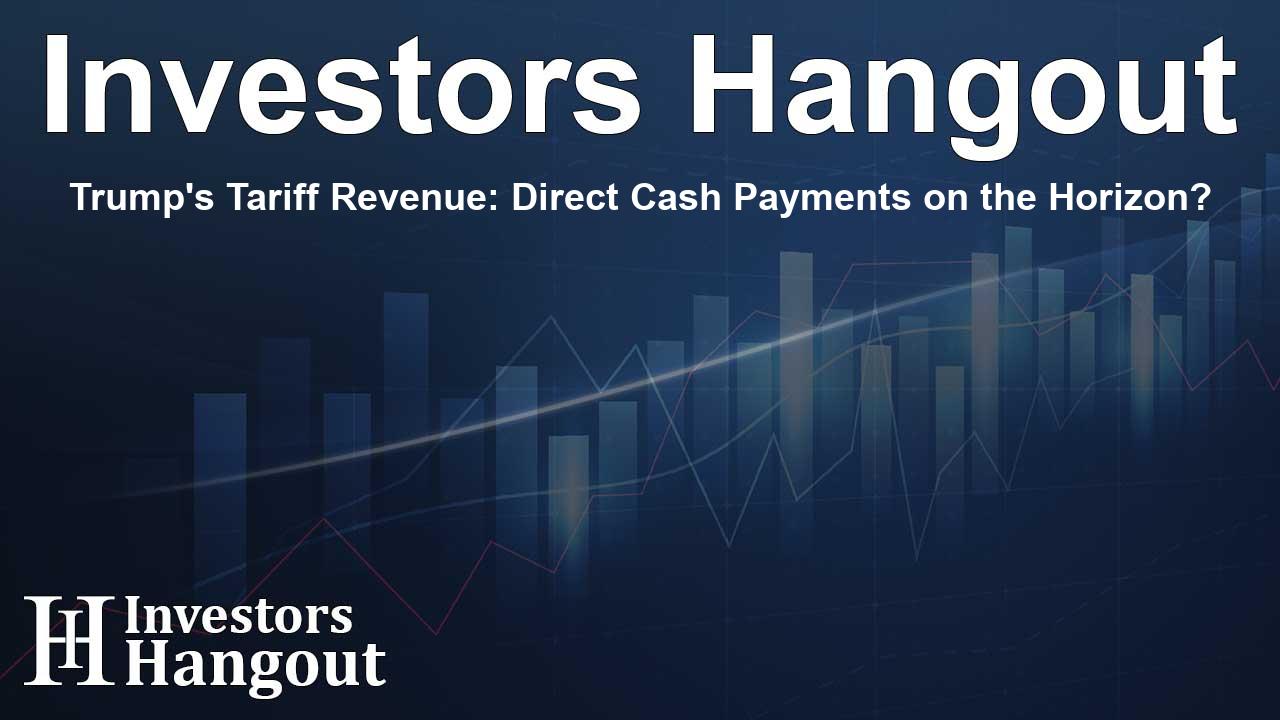Trump's Tariff Revenue: Direct Cash Payments on the Horizon?

Exploring Trump's Cash Payment Proposal Linked to Tariffs
Recently, President Donald Trump hinted at a new financial strategy that may put cash directly into the hands of American citizens. This initiative is fueled by a dramatic increase in tariff revenue, raising questions about its implications as we approach future elections.
Staggering Growth in Tariff Revenues
The U.S. Treasury reported a remarkable influx of $267.7 billion in tariff revenue during just the second quarter—an astonishing 188.7% increase from the same period last year. When combined with the first quarter's earnings of $96.97 billion, the total for 2025 has exceeded $360 billion, well ahead of schedule.
Potential Impact on American Finances
Trump expressed optimism regarding the distribution of tariff revenues among Americans, suggesting that these funds could be sent out relatively soon. However, specific details regarding the amounts or eligibility criteria remain unclear.
Resembling Pandemic-era Stimulus Checks
The proposed payments could draw parallels to the stimulus checks issued during the pandemic, albeit under different political motivations and frameworks. This approach has garnered attention and speculation from both supporters and critics.
Experts Weigh In on the Economic Consequences
Amid discussions of potential rebates, economists are divided over the anticipated economic effects. Some fear that while such payments could stimulate consumer spending, they could lead to greater challenges with inflation in the long run.
Concerns of Inflation and Spending
Financial analysts suggest that if government reports indicate economic weakness, the anticipated checks might not exacerbate inflationary pressures. However, they caution that increased spending could create a cycle where tariff costs are passed along to consumers.
Disparity in Economic Benefits
Academics like Paul Johnson have drawn comparisons between proposed rebate checks and earlier stimulus packages, though they warn that current economic conditions—marked by inflation and stagnant wages—may dampen their effectiveness.
Understanding the Mechanics of Tariff Revenue Distribution
An insightful analysis by a research paper from the Federal Reserve Bank indicates that under certain conditions, revenue from tariffs can lead to improved welfare outcomes, particularly when paid out as lump-sum payments to lower-income households. This practice not only mitigates inequality but can enhance economic activity overall.
Effective Redistribution Strategies
Moreover, the findings suggest that utilizing tariff income for direct transfers can yield greater benefits than reducing capital income taxes, which predominantly favors wealthier individuals. Without proper redistribution, tariffs face criticism for disproportionately harming low-skilled workers.
The Big Question: Cash Handouts or Deficit Reduction?
As we explore the feasibility and potential rollout of rebate checks, tax adjustments, and targeted relief options, the massive tariff production clearly presents itself as a tool for both political gain and economic reform. However, it's uncertain how aggressively the administration will lean into these cash distributions as they estimate a budget deficit poised to reach significant levels.
Ultimately, the debate remains: will the substantial surplus from tariffs translate into tangible benefits for everyday Americans or simply contribute to ongoing federal budget concerns? Only time will reveal the trajectory of this ambitious proposal, as the administration grapples with balancing economic growth against the wider implications for national financial health.
Frequently Asked Questions
What is the proposed cash payment linked to tariff revenues?
President Trump has suggested the possibility of cash payments to Americans funded by revenues from tariffs, but specific details are not yet available.
How much revenue has the U.S. government earned from tariffs?
The U.S. Treasury reported approximately $360 billion in tariff revenue for 2025, showing a remarkable increase from previous years.
What are the economic implications of these proposed payments?
Economists are divided on whether the cash payments would stimulate the economy or create additional inflationary pressures.
How could tariff revenue be used aside from cash payments?
There are suggestions that tariff revenues could be used to reduce income taxes for lower earners or provide support for American farmers.
What factors could influence the decisions on cash payments?
The ongoing budget deficit and the overall health of the economy will play a significant role in determining the feasibility of cash payments to citizens.
About The Author
Contact Ryan Hughes privately here. Or send an email with ATTN: Ryan Hughes as the subject to contact@investorshangout.com.
About Investors Hangout
Investors Hangout is a leading online stock forum for financial discussion and learning, offering a wide range of free tools and resources. It draws in traders of all levels, who exchange market knowledge, investigate trading tactics, and keep an eye on industry developments in real time. Featuring financial articles, stock message boards, quotes, charts, company profiles, and live news updates. Through cooperative learning and a wealth of informational resources, it helps users from novices creating their first portfolios to experts honing their techniques. Join Investors Hangout today: https://investorshangout.com/
The content of this article is based on factual, publicly available information and does not represent legal, financial, or investment advice. Investors Hangout does not offer financial advice, and the author is not a licensed financial advisor. Consult a qualified advisor before making any financial or investment decisions based on this article. This article should not be considered advice to purchase, sell, or hold any securities or other investments. If any of the material provided here is inaccurate, please contact us for corrections.
